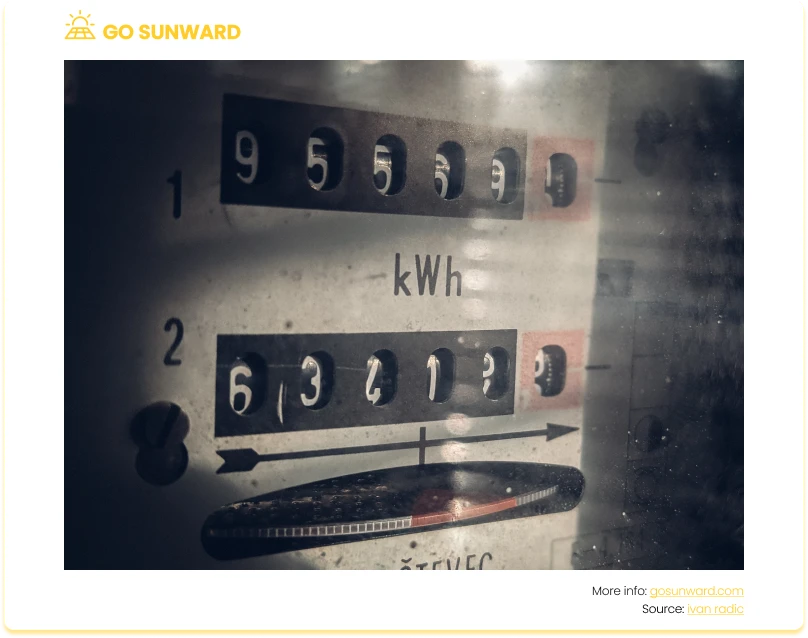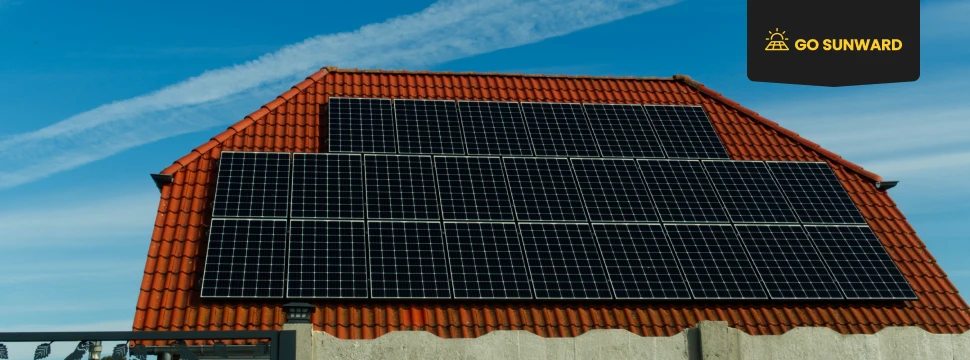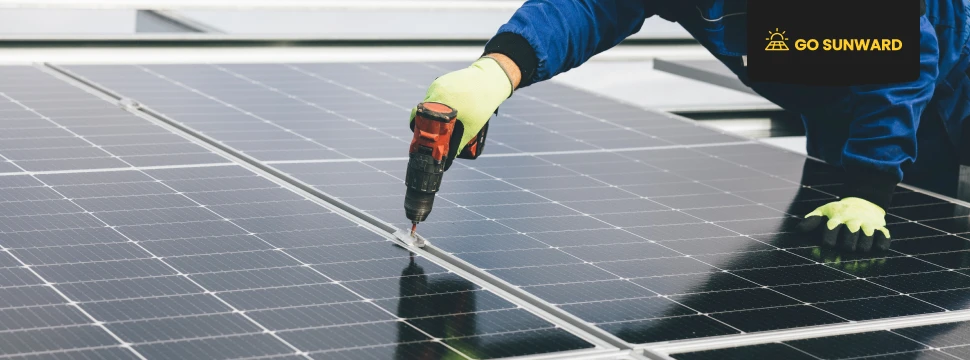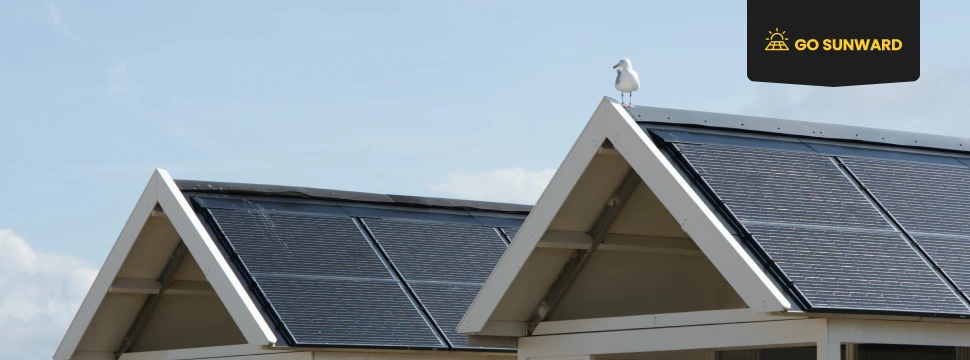How Many Solar Panels Do I Need For 1000 kWh Per Month?
As the world collectively turns its focus toward sustainable and eco-friendly energy solutions, the role of solar power to electrify our homes and businesses has gained prominence. One key aspect of this transition is understanding the precise requirements when it comes to solar panels, particularly concerning your own specific energy goals. It’s the million dollar question – how many solar panels are needed for 1000 kWh per month?
The driving force behind this surge in interest lies in the dual promise of sustainability and substantial cost savings. More and more homeowners are recognizing the potential not only to reduce their carbon footprint but also to harness the sun’s energy to significantly reduce their monthly electricity bills.
This article delves into the crucial question: “How many solar panels do I need for 1000 kWh per month?” We’ll provide you with the insights and information necessary to embark on your solar journey.
Understanding Your Energy Needs
Before investigating what panels are right for you and how many you may need, it is first essential to work out your own energy needs. To do that, we must grasp the fundamental concept of kilowatt hours (kWh) and why it plays a pivotal role in your solar panel calculations.
kWh is the unit of measurement for electrical energy consumption; it reflects how much electricity you use over time. Determining your daily and monthly energy consumption in kWh is the crucial first step in correctly sizing your solar panel system. You can usually locate consumption information on your existing utility bills. Look out for data measured in kWh. This information serves as the foundation for calculating how many solar panels you’ll need to generate 1000 kWh per month. Accurate knowledge of your energy needs ensures that your solar installation aligns seamlessly with your electricity demands, optimizing both savings and sustainability.

Why 1000 kWh Per Month?
So why is ‘1000 kWh per month’ frequently cited when discussing solar panels? Well it is a practical benchmark used to help homeowners and businesses gauge the sizing and effectiveness of a solar panel system. Here is why it’s commonly used:
Average Household Energy Consumption: 1000 kWh per month is roughly the average electricity consumption for many households in the United States. According to the EIA, the average annual electricity consumption for a US residential utility customer in 2021 was 10,632 kWh, an average of about 886 kWh per month. Our research shows that this increased to over 900 kWh in 2022. So that’s 30 kWh per day or 1.25 kWh per hour.
That said, average electricity usage varies widely based on factors such as the house size, the region it’s located in, the efficiency of appliances, and the local utility rates. Using the rough figure of 1000 kWh figure as a reference point allows homeowners to assess how much of their electricity needs can be covered by a solar panel system of a certain size.
Sustainability and Energy Independence: Achieving a solar panel system capable of generating 1000 kWh per month is often seen as a significant milestone towards sustainability and energy independence. It represents a substantial reduction in reliance on grid-supplied electricity, which is often generated from fossil fuels.
Cost Savings: Many people install solar panels with the goal of reducing their electricity bills. Meeting or exceeding the 1000 kWh per month mark can lead to noticeable savings, making it an attractive target for homeowners looking to maximize their return on investment.
Sizing and Estimation: Using 1000 kWh per month as a reference point helps individuals estimate the number of solar panels needed to meet their energy goals. While the actual requirements may vary based on location, energy efficiency measures, and other factors, it provides a starting point for calculations. Regulatory and Incentive Programs: Some solar incentive programs and regulations are based on specific energy production targets, such as generating a certain amount of electricity per month. In such cases, aiming for 1000 kWh per month can align with program requirements.
Panel Efficiency Vs. Wattage
The link between panel wattage and efficiency in the context of solar panels is important to understand when evaluating the performance and effectiveness of a solar panel system. Here’s how they are connected:
Solar Panel Efficiency:
- Efficiency refers to the ability of a solar panel to convert sunlight into electricity. It is expressed as a percentage and represents the portion of sunlight energy that the panel can capture and convert into electrical power.
- Higher efficiency means that a solar panel can convert a greater percentage of the sunlight it receives into electricity. For example, a solar panel with 20% efficiency converts 20% of the sunlight into electricity, while the rest is lost as heat or other forms of energy.
- Currently, solar panel efficiency typically hovers around 18%-20% on average. However, this figure can fluctuate depending on a variety of factors (see below!).
Solar Panel Wattage:
- Wattage or power output is a measure of the actual electrical power a solar panel can produce under specific conditions. It is typically measured in watts (W) or kilowatts (kW).
- Manufacturers must provide panels with a label indicating their kilowatt-hour output per hour under ideal conditions, specifically when exposed to direct sunlight on a clear, cloudless day. This label corresponds to what is known as a Standard Test Condition rating (STC).
- For instance, a panel may bear an STC rating of 300, signifying its capacity to generate 300 watts of power in such conditions.
- A solar panel’s wattage is determined by the surface area of the panel, the efficiency of the solar cells it contains, and the intensity of sunlight it receives.
Factors Impacting Efficiency
Many factors can affect the efficiency of solar panels. The STC rating reflects solar panel performance under ideal conditions when converting solar energy into electricity, and will typically not take into consideration the following factors:
- Type of Solar Cells: Different types of solar cells have varying efficiencies. Monocrystalline and polycrystalline solar cells are commonly used, with monocrystalline cells generally being more efficient. Emerging technologies like perovskite solar cells also promise higher efficiencies.
- Panel Quality: The quality of the materials used in manufacturing panels can affect their efficiency. High-quality panels tend to have better efficiency and longer lifespans.
- Temperature: Solar panels become less efficient as they get hotter. Extremely high temperatures can reduce a panel’s efficiency, which is why some panels are designed to handle heat better than others.
- Dust and Dirt: Accumulation of dirt, dust, or debris on the surface of solar panels can reduce their efficiency by blocking sunlight. Regular cleaning helps maintain panel performance.
- Shading: Partial shading of solar panels can significantly reduce efficiency. Even a small shadow on one panel can affect the entire array’s output.
- Panel Angle and Orientation: The angle at which panels are mounted and their orientation relative to the sun impact efficiency. Panels positioned optimally for a location’s latitude and with a suitable tilt angle can maximize energy production.
- Age and Degradation: Solar panels degrade over time, which can reduce their efficiency. However, high-quality panels tend to degrade more slowly.
- Reflection and Bifacial Panels: Bifacial panels can capture sunlight from both the front and rear sides, taking advantage of reflected light. This technology can boost efficiency in certain conditions.
- Inverter Efficiency: The inverter converts DC electricity from panels into AC electricity for use in homes. A more efficient inverter can optimize energy production.
- System Design: The overall design of the solar panel system, including the arrangement of panels and wiring, can affect efficiency. Proper design minimizes losses and maximizes efficiency.
- Local Climate: Climate conditions, such as cloud cover and air pollution, can impact the amount of sunlight reaching the panels and, consequently, their efficiency.
- Maintenance: Regular maintenance, including cleaning and inspecting panels for damage, helps ensure optimal efficiency over time.
Peak Sun Hours
So now we know the panel wattage and understand a bit more about efficiency, we also need to find out the amount of peak sun hours your home receives per day. This will help us work out how many solar panels you need for 1000 kWh per month.
When we consider the total sunlight exposure a solar panel receives in a 24-hour cycle, the typical American roof benefits from approximately four hours of “full” or “usable” sunlight each day. Of course, this duration may fluctuate significantly depending on your location, whether you reside in a sun-soaked desert or amidst misty mountain terrain. The National Renewable Energy Laboratory (NREL) offers comprehensive access to a wealth of renewable energy resource information via a range of tools, maps, reports, and data collections, which will help you assess your sunlight availability.
Onto The Panel Calculation
Now we have found out your household’s energy needs (in this case, 1,000 kWh per month), determined the panel wattage and we have found out the average peak sun hours your location receives per day, we can now roughly calculate the number of solar panels needed.
Number of Panels = (Hourly Energy Requirement in watts x Peak Sunlight Hours) / Solar Panel Wattage
For a step-by-step guide on using a panel calculation, click here.
While this calculation looks simple enough, it is important to understand that the solar system is not entirely efficient in this conversion process (as highlighted above!). Therefore, when discussing a potential solar installation with a company, it’s likely they’ve already factored in a 20% de-rating or ‘cushion’ to provide a more realistic estimate.
If your goal is to generate 1,000 kWh of electricity each month, it’s crucial to aim for an actual production of 1,250 kWh per month to account for potential efficiency losses.
Conclusion
Determining the number of solar panels required to generate 1000 kWh per month is a pivotal step in harnessing the power of the sun for your energy needs. Through calculations based on your location’s sunlight exposure, panel wattage and efficiency, and energy consumption patterns, you can customize your solar panel system to align with your sustainability goals and budget.
As solar technology continues to advance and environmental consciousness grows, making an informed choice about your solar panel installation is a smart financial move and a significant contribution to a greener, more sustainable future as you offset your carbon usage.
Remember that while these calculations provide a starting point, consulting with solar professionals can ensure your solar panel system is tailored perfectly to your unique requirements. So, whether you’re motivated by cost savings, environmental responsibility, or both, the journey to solar energy begins with understanding your energy needs and the number of panels your home requires.




